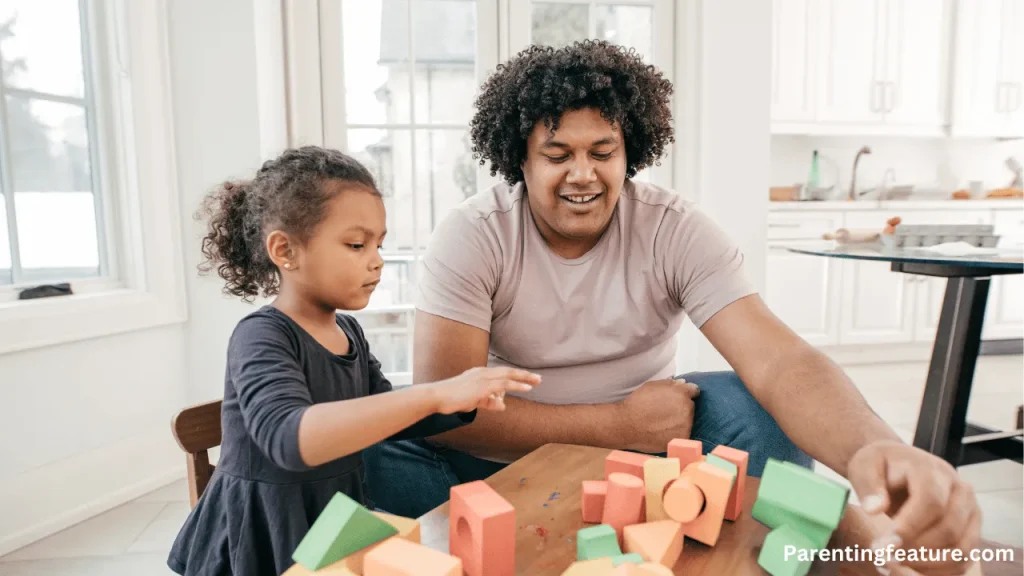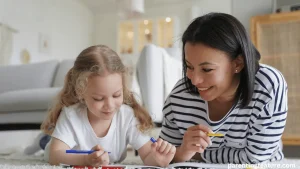In the heart of a bustling classroom, amidst the cacophony of eager voices and rustling papers, a small child sits perplexed before a complex jigsaw puzzle. With each piece a mystery and every attempt a new challenge, the child’s determination does not waver.
Piece by piece, the image starts to form, not just on the board but in the child’s mind, where problem-solving sparks the flame of creativity.
This scene, simple yet profound, serves as a testament to our central argument: problem-solving directly stimulates creativity in children, developing crucial life skills essential for navigating the intricate tapestry of life.
This article delves into the symbiotic relationship between problem-solving and creativity, exploring the multifaceted benefits of nurturing these skills in young minds.
We will explore the definition of creativity beyond the narrow confines of artistic expression, investigate the cognitive benefits of problem-solving exercises, and share practical strategies for fostering an environment where creativity and problem-solving flourish. Finally, we’ll examine adults’ pivotal role in guiding children on this creative journey.
Defining Creativity in a Child’s Context
A common misbelief shadows our understanding of creativity, confining it to the realms of art, music, and literature. This narrow perception overlooks the essence of creativity as a universal mindset that transcends all areas of learning and doing.
Creativity is not about the output but the process; it’s the spark in the eye of a child building a fortress from cushions or the resolve to solve a math problem with an unconventional method.
Embracing creativity as a journey rather than a destination reveals its true nature. It’s about exploration, experimentation, and the relentless pursuit of novel solutions across various contexts.
Whether solving a puzzle, constructing an imaginative fort, improvising an enthralling story, devising a simple science experiment, or negotiating the terms of a playground treaty, creativity manifests in myriad ways, enriching a child’s experience and learning.
Also read: Understanding Why Children Need Fostering

Cognitive Benefits of Problem-Solving for Creativity
Neuroplasticity highlights the brain’s ability to form new neural connections in response to learning and experience.
Problem-solving exercises challenge the brain, fostering an environment ripe for creativity by developing these connections, shaping thought patterns, and enhancing cognitive flexibility.
Critical thinking—analyzing information, evaluating alternatives, and applying logic—is at the heart of problem-solving.
This analytical process is instrumental in nurturing a child’s creative abilities, paving the way for divergent thinking, where multiple solutions are envisaged for a single problem.
Such a mindset enriches a child’s creativity and fosters resilience, enabling them to tackle complex challenges confidently and ingeniously.
Also read: How Fostering Affects Your Children
Strategies for Nurturing Problem-Solving and Creativity
Promoting open-ended play with diverse materials encourages children to experiment and discover.
Guiding rather than dictating the flow of exploration with thoughtful questions (“What would happen if…?”) stimulates problem-solving, urging children to think outside the box and embrace their creative impulses.
Embracing Mistakes and Process Over Product
Creating a supportive environment where mistakes are viewed as stepping stones to learning is crucial for innovation. Valuing the process over the product — the thought, effort, and exploration — encourages children to engage deeply in problem-solving activities without fearing failure.
Real-World Problems and Exposure to Diversity
Incorporating problem-solving into daily routines (e.g., sorting laundry and planning a meal) demonstrates its practical value. At the same time, exposure to diverse cultures, artistic mediums, and perspectives broadens a child’s horizon, igniting creativity.
The Role of Adults
Adults play a critical role in modeling a growth mindset and a positive attitude toward challenges. By acting as facilitators rather than directors, they allow children the space to lead their explorative and problem-solving endeavors, fostering a sense of independence and creative confidence.
Engaging with a child’s interests and inquiries with genuine curiosity and open-ended questions nurtures a culture of wonder and exploration, laying the foundation for a lifelong journey of creativity and problem-solving.
Conclusion
The intertwining paths of problem-solving and creativity chart a course toward developing resilient, innovative thinkers equipped to face the complexities of an ever-evolving world.
By redefining creativity, understanding its cognitive benefits, and employing strategic approaches to nurture it alongside problem-solving skills, parents, educators, and caregivers can unlock the vast potential residing within every child.
Let us commit to prioritizing these opportunities in our interactions with young minds, inspiring the next generation of creative problem solvers ready to invent, explore, and dream.
FAQs
1. What is creativity in the context of child development?
Creativity in child development transcends the traditional confines of artistic expression, embodying a mindset of exploration, experimentation, and innovation across all domains of a child’s experiences. It is about finding unique solutions and expressing oneself in myriad ways through art and daily interactions and challenges.
2. How does problem-solving stimulate creativity in children?
Problem-solving challenges the brain, fostering neuroplasticity and enabling the formation of new neural connections. This process enhances cognitive flexibility and encourages critical thinking and divergent thinking, where children learn to analyze situations, evaluate different solutions, and think outside the box, all of which are essential aspects of creativity.
3. Can problem-solving skills impact a child’s future?
Yes, problem-solving skills profoundly impact a child’s future by developing resilience, adaptability, and innovative thinking. These skills prepare children to tackle complex challenges confidently and creatively, essential qualities in an ever-changing world.
4. What are some practical strategies to encourage problem-solving and creativity at home?
Effective strategies include encouraging open-ended play, posing thought-provoking questions, embracing mistakes as learning opportunities, and emphasizing the process over the product. Integrating problem-solving in everyday tasks and exposing children to diverse cultures and perspectives also significantly fosters creativity.
5. How can adults best support a child’s creative and problem-solving development?
Adults can best support this development by adopting a growth mindset, acting as facilitators rather than directors, and engaging with genuine curiosity with children’s interests and questions. Encouraging exploration and independent thinking is critical to nurturing creative problem solvers.








